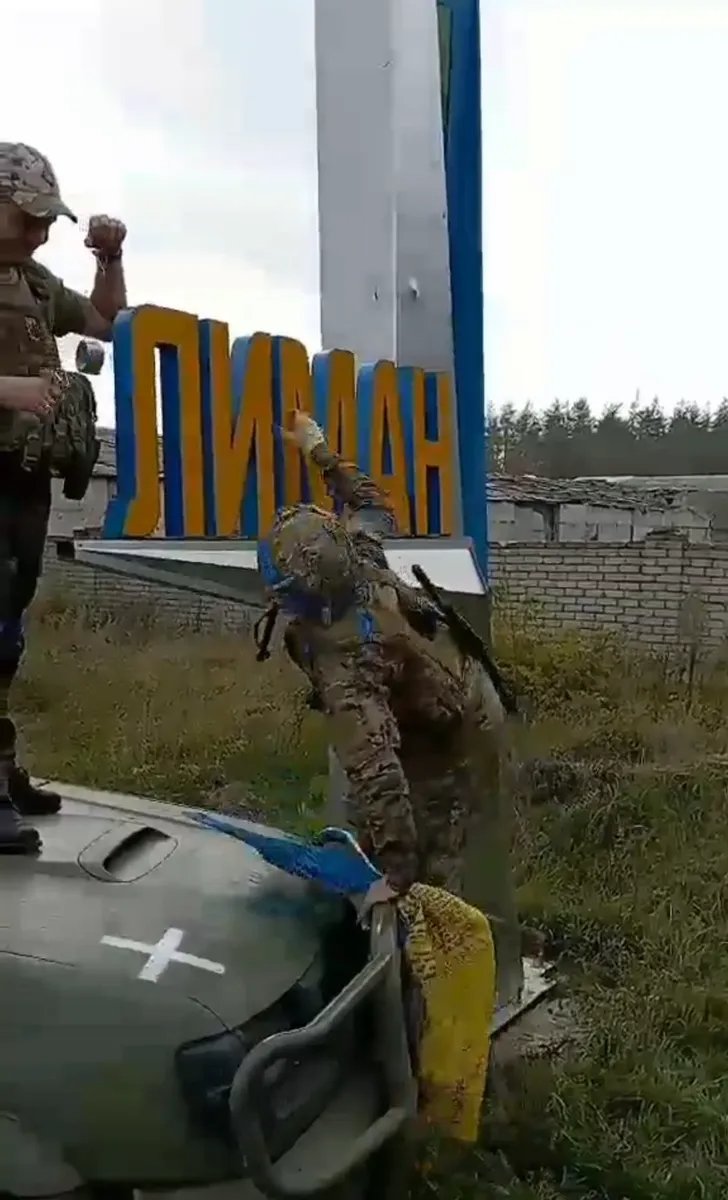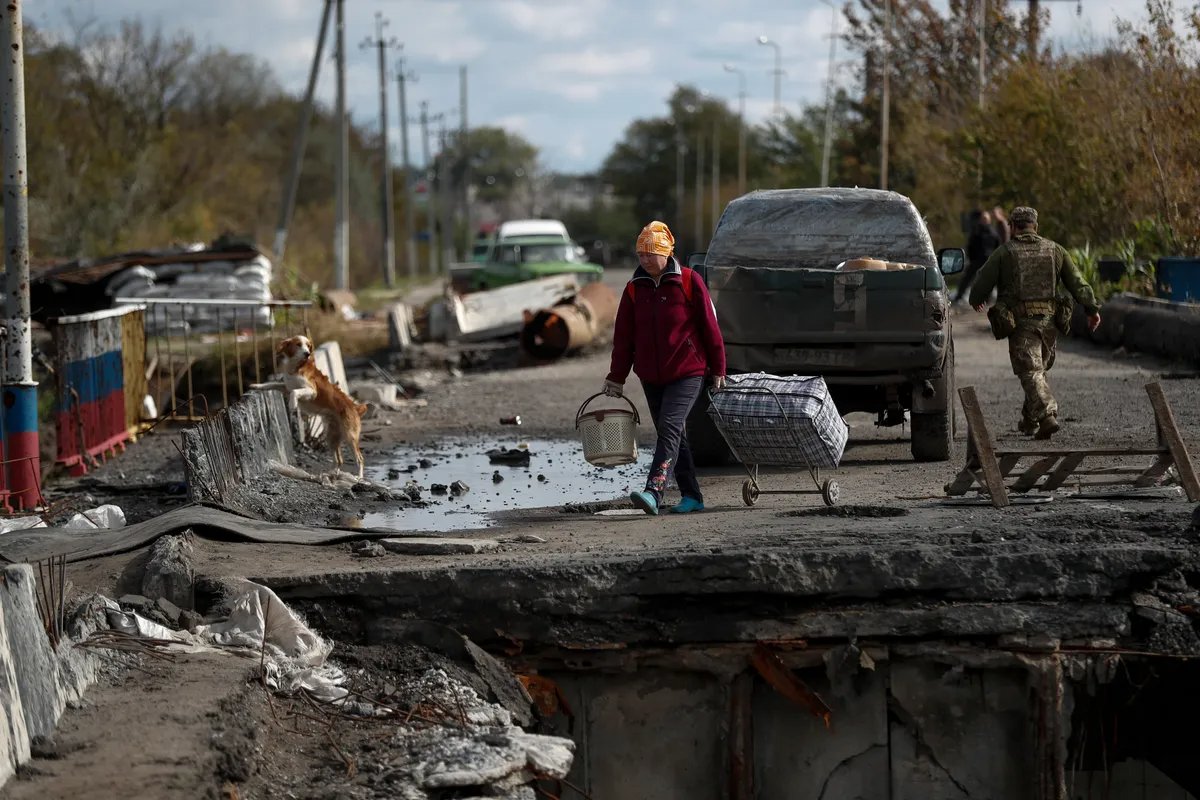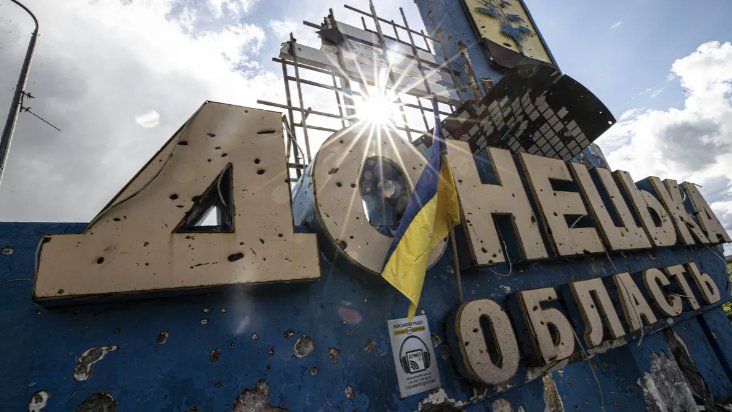On 1 October, just after Vladimir Putin signed treaties annexing Ukraine’s occupied territories, the Ukrainian army liberated Lyman. At around 5 PM Moscow time, the Russian Ministry of Defence said with a heavy heart: “Due to the threat of encirclement, allied troops were withdrawn from the settlement of Krasny Lyman (Russia uses the old Soviet name for this city — author's note) to more advantageous frontiers.”
In fact, the fate of the Russian soldiers and officers in the town is unclear (according to Ukrainian reports, between 3,000 and 6,000 Russian army personnel were stationed in Lyman). Some of them may have managed to break out of the encirclement, but many of them were most likely either killed or taken prisoner. Ukraine has won a victory comparable to the liberation of the Kharkiv region and the liquidation of the Izium grouping of the Russian army. The Armed Forces of Ukraine (AFU) are now able to gain ground in the Luhansk region. Moscow now faces the question of how to respond to another heavy military defeat.
The battle for Lyman
The battle for Lyman is sometimes called the “final chapter” of the Izium-Kupiansk operation. There’s some justification for that: indeed, a stage in the offensive of the Ukrainian troops that began on 5 September has drawn to a close. In the next few days, the AFU can take a breather to make up for their losses, re-group if necessary and prepare for a new round of fighting. It is more likely, however, that the pace of the Ukrainian offensive will be maintained in order to prevent the enemy from gaining a foothold on the new lines of defence.
By the end of March, the AFU was able to push Russian forces out of Kyiv, Chernihiv and Sumy regions, eliminating the immediate threat to Kyiv. For Ukraine, however, the war with Russia was largely unsuccessful until mid-summer. Considerable ground was lost in the south — almost all of Luhansk and close to half of the Kharkiv region. Izium fell on 1 April, and Lyman was lost at the end of May. There was a real threat of Ukrainian troops operating east of the Lyman-Bakhmut line being encircled, opening the way for a Russian offensive against Sloviansk and Kramatorsk.
In early September, the situation in eastern Ukraine began to change. The Russian defence near Balakliya was breached, and within a week, the Ukrainian Army had practically liberated the Kharkiv region, taking Kupiansk and Izium. At the same time, Ukrainian troops stepped up their activity in the direction of Lyman. The Siverskyi Donets River was forced, several important settlements were liberated, and, on 9 September, Ukrainian advanced units reached the suburbs of Lyman.
On 10 September, an offensive was launched against this small but strategically important town, but attempts to storm it head-on proved unsuccessful. Had they continued, the Ukrainian army could have suffered heavy losses. The Ukrainian command’s subsequent decision was the only possible one: to bypass Lyman from the north- and southwest, cutting off supply routes, ammunition and reinforcements. And they did exactly that.

The AFU entering Lyman in the Donetsk region. Photo: a screenshot from the video
In early September, the AFU occupied the Korovii Yar and Ridkodub settlements in the north, taking Drobysheve on 29-30 September. The same two days saw Yampil in the southern region of Vinnytsia liberated. From that moment, the fate of Lyman was sealed. It remained to close the encirclement ring in the area of Zarichne-Torske, which is a transport hub linking Lyman with the Russian-occupied territory of the Luhansk region.
By Sunday evening on 2 October, the Ukrainian Armed Forces had taken Torske and finally cut off the road through it. However, the outcome of the battle for Lyman was clear even earlier — on 30 September. A day later, on 1 October, Moscow ordered its troops to evacuate and move to “more advantageous frontiers”. It is not immediately clear where these “advantageous frontiers” are. Some sources claim that the Russian troops that were able to break out of the encirclement are concentrated near Kreminna (30 kilometres from Lyman), covering the Rubizhne — Sievierodonetsk — Lysychansk agglomeration from the north-west.
According to the UK Ministry of Defence, Lyman’s importance lies in the fact that it controls key communications crossing the Siverskyi Donets river and is used by Russia “to consolidate its defences”. To this we can add that with its capture, the AFU has gained access to operational space in the northern part of the Luhansk region, which was seized by Russia in the spring of 2022.
Finding a scapegoat
As soon as the prospect of Lyman’s fall loomed, Russia began searching for someone to blame. Naturally, the military leadership was chosen as a scapegoat. General Andrey Gurulev, former deputy commander of the troops of Russia’s Southern Military District and current member of the State Duma, said:
“From a military point of view, I can’t explain the surrender of Lyman. It wasn’t a short-lived battle. It’s unclear to me why the situation wasn’t properly assessed and the grouping wasn’t reinforced during all this time. The problem is in pervasive and endemic lies, everyone giving out ‘good situation’ reports. This system covers the whole system from the top down.”
Gurulev was also interested in another important question. “What happened to the 1.5 million sets [of uniforms] that were stored at the personnel reception points? We have problems with uniforms and other things. It was all there — where has it gone?” he lamented. “There’s no one anywhere that can give me an explanation!”
The last question is clearly rhetorical. A high-ranking general must know where his military uniforms have disappeared to — clearly, they have been stolen and sold off.
Another loud critical voice was Chechen leader Ramzan Kadyrov, who did not fail to accuse General Alexander Lapin, head of the Central Military District and commander of the central group of forces operating in the east of Ukraine, calling him a “mediocrity” while suggesting the use of tactical nuclear weapons.
In Kadyrov’s opinion, the Russian General Staff, covering up for Lapin, was also to blame for the defeat. On their part, several so-called “military correspondents” (“voenkory” in Russian — translator’s note) — state media employees or creators of their own TV channels who regularly go to the front and usually reflect the views of certain groups of generals — stood up for Lapin. Blaming him for the withdrawal of troops from Lyman is wrong, wrote the telegram channel Rybar, a respected source in militarist circles. “You can't jump over your head,” the channel sadly stated, adding that the Western Military District troops simply “turned out not to be combat-ready, with the exception of the 20th Combined Arms Army.” The latter, however, was unable to rectify the situation.
There is no doubt that Russian generals are not known for their powerful intellect or high professionalism. It’s also understandable that they’re afraid to upset Putin with bad news, and they gloss over the situation on the frontlines as best they can. But it doesn’t come down to just this: the accusations launched against Russia’s top military brass are designed to hide the fact that Vladimir Putin bears the greatest responsibility for the failure of the Russian army in eastern Ukraine.
After all, it was he who ordered to send all available reserves, as well as the newly formed ones, to the Kherson region and Donetsk in the middle of summer and categorically forbade their transfer from there first to Kharkiv or Lyman. As a result, the Russian army was left without reserves in these areas and was practically doomed to suffer a defeat.
Finally, Russia’s defeats in the east have raised the question of responsibility for a war that Putin cannot win and is likely to lose. There are two options here: either the top political figures and the military, in the name of saving the regime, will accuse Putin of starting a war that cannot be won, or Putin will accuse the generals that they lost the war through incompetence or even betrayal. The consequences of either option are clear.

Kupiansk, 3 October 2022. Photo: EPA-EFE/ATEF SAFADI
What’s next
A showdown between Putin and his generals is inevitable, but most likely will drag on for several months. A lot can happen during that time. The capture of Lyman allows Ukrainian forces to advance in two main directions. The first is on Svatove, an important transport junction where several highways that supply Russian troops in the Donetsk and Luhansk regions intersect. During the offensive, the AFU may cut the Svatove-Kreminna road and eliminate Russian strongholds that run along it. In the Svatove area, advancing Ukrainian units may encounter forces from Kupiansk moving towards them and, in the event of Svatove’s liberation, the AFU can launch an offensive on Starobilsk. Another potential line of action by the Ukrainian army in the coming weeks is an attack on Kreminna, the town that covers the Rubizhne — Sievierodonetsk — Lysychansk agglomeration from the northwest, which Ukraine lost in June.
The results of such actions by the AFU are still hard to tell, but if they are successful, Russia’s position in the entire northern part of the Luhansk region will be undermined. The time factor is very important: the Ukrainian army has 4-5 weeks to storm Svatove, Starobilsk and Kreminna, as already in the first decade of November, we can expect the beginning of the autumn thaw, during which the intensity of combat operations by ground troops is seriously reduced. We cannot expect Moscow to decide to move any significant forces to the Luhansk region from Kherson and Zaporizhzhia regions or from the Donetsk direction. In this case, the defences would be weakened.
The nature of Ukraine’s possible actions in the coming days and weeks is roughly clear. It’s more difficult to answer this question: what will Moscow do? Only one thing is evident so far — the Russian authorities will try to stop the advance of the AFU in the east by throwing untrained masses of mobilised men into battle. The only obvious result of this will be a monstrous level of casualties. People who have just been drafted into the army don’t have the slightest idea of how to behave in combat. Rocket terror against Ukrainian cities and critical infrastructure will be pushed to the limit. The Kremlin will accuse Ukraine of aggression and declare war on its occupied territories. Finally, in desperation, Putin might risk a nuclear strike on Ukrainian troops or infrastructure — that cannot be ruled out. That would be the end of Putin, Russia and, who knows, perhaps all of modern civilisation.
Join us in rebuilding Novaya Gazeta Europe
The Russian government has banned independent media. We were forced to leave our country in order to keep doing our job, telling our readers about what is going on Russia, Ukraine and Europe.
We will continue fighting against warfare and dictatorship. We believe that freedom of speech is the most efficient antidote against tyranny. Support us financially to help us fight for peace and freedom.
By clicking the Support button, you agree to the processing of your personal data.
To cancel a regular donation, please write to [email protected]

